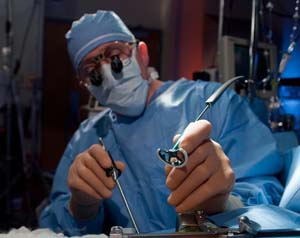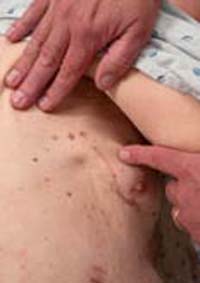Heart Valve Surgery
At St. Mary Heart and Vascular Institute and Mercy Cardiac Valve Center, cardiovascular surgeons perform minimally invasive heart valve repair or replacement surgeries using small incisions and specialized instruments to operate on heart valves. They also perform minimally invasive procedures such as Mitra-Clip.
Because faulty valves place increasing stress on the heart, causing shortness of breath, weakening of the heart muscle, enlarging of the heart, and, in many cases, can cause congestive heart failure or stroke, it is important that experienced, specialized cardiothoracic surgeons intervene to correct the problem.
What’s the difference between valve repair and valve replacement?
 Repair means that the valve is mended to help it work better. Replacement means the diseased valve is removed and a new valve, either mechanical or biologic, is inserted in its place. The surgeon decides whether to repair or replace a valve based on the extent of damage to the valve. Learn more about treatment options for valve disease.
Repair means that the valve is mended to help it work better. Replacement means the diseased valve is removed and a new valve, either mechanical or biologic, is inserted in its place. The surgeon decides whether to repair or replace a valve based on the extent of damage to the valve. Learn more about treatment options for valve disease.
What happens during valve surgery?
During a minimally invasive heart valve surgery, the breastbone is not divided and retracted as in open heart surgery. Surgeons use a two-inch keyhole incision in the patient's chest to gain access to the heart and perform the procedure laparoscopically.
These surgeries may take longer and require a surgeon with a higher level of surgical skill. Not all people are candidates for this minimally invasive type of surgery, especially those who have atherosclerosis (hardening of the arteries) or obesity.
Advantages of minimally invasive valve surgery
- Reduced loss of blood during surgery
- Fewer side effects associated with large incisions
- Reduced hospital stay
- Less pain
- Shorter recovery time
- Less scarring
Fast facts about minimally invasive valve surgery
 Use small incisions and specialized instruments to operate on heart valves
Use small incisions and specialized instruments to operate on heart valves- The breastbone is not divided and retracted as in open heart surgery. Surgeons use a two-inch keyhole incision in the patient's chest to gain access to the heart and perform the procedure laparoscopically
- These surgeries may take longer and require a surgeon with a higher level of surgical skill.
- Not all people are candidates for this minimally invasive type of surgery, especially those who have atherosclerosis (hardening of the arteries) or obesity
- The surgeon decides whether to repair or replace a valve based on the extent of damage to the valve

